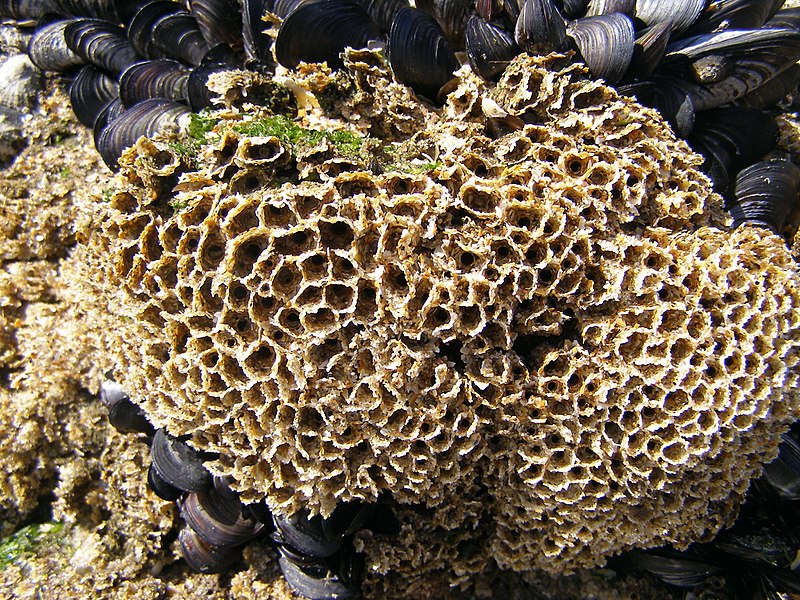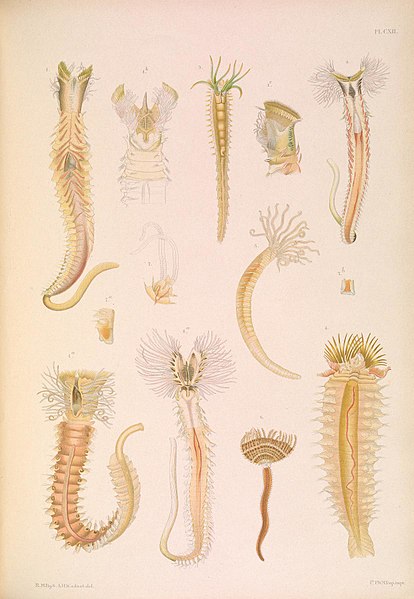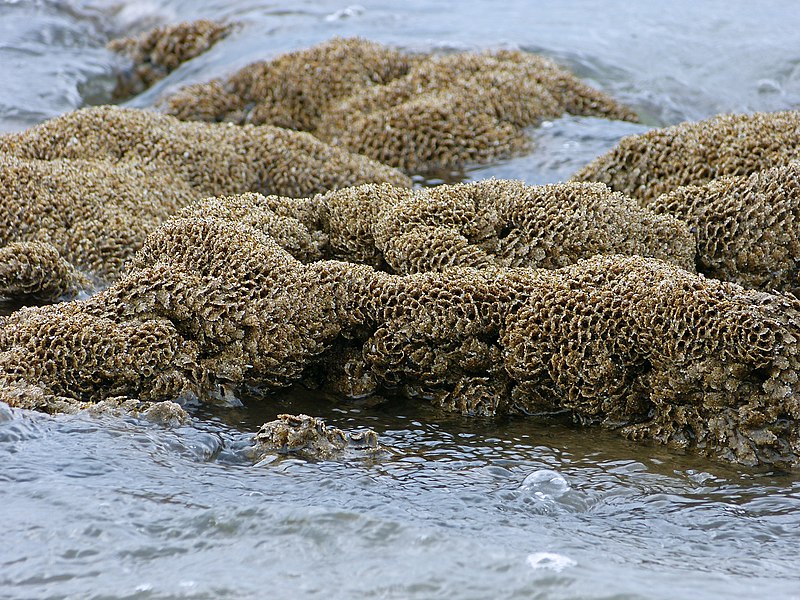❀ Common names: sand builder worm
❀ Aphia ID#: 157555

Júlio Reis [CC BY-SA 3.0 (https://creativecommons.org/licenses/by-sa/3.0)]
Introduction to Sabellaria Vulgaris Verrill
What is Sabellaria Vulgaris Verrill?
A species of polychaete. Sabellaria vulgaris Verrill is distributed on the Eastern coast of the United States from Cape Cod Massachusetts down through Florida. They create reef-like masses by building tubes in the sand (Rees 1976). You can typically find these close together parallel tubes on the low tide line of sandy beaches. The tubes which make up the masses are between 20 and 40 centimeters tall, and are able to resist wave action because of how hard they are. Tube walls are made up of cemented sand grains and an interior mucoid layer, they are attached to a hard substrate and are unbranched, resembling a honeycomb (Wells 1970). Sabellaria vulgaris Verrill feed on plankton and other bits of organic matter in the water column (Chesapeake Bay Program 2019).
How to identify it/ species description
Annelids also known as bristle worms are segmented worms with soft bodies and hair like bristles on their sides. Their appendages are known as parapodia, each segment of their body has one pair of parapodia (Chesapeake Bay Program 2019). Sabellaria vulgaris Verrill can be found as individuals or live close by one another (Wells 1970). Concentrated populations, aka large colonies are not common, but can be found in the Delaware Bay (Curtis 1978).
Role in the ecosystem
Masses made by Sabellaria vulgaris Verrill can provide shelter from wave action and stabilize beach sands. Various marine species can inhabit the crevices that these polychaetes create. The hard masses also provide an attachment site for sessile organisms as well as food, shelter, and protection for a host of marine life (Wells 1970).
Distribution Map
More Images
1st image: Auguste Le Roux [CC BY 3.0 (https://creativecommons.org/licenses/by/3.0)]
2nd image: Mackintosh [Public domain]
3rd image: Andrea Bonifazi [CC BY-SA 4.0 (https://creativecommons.org/licenses/by-sa/4.0)]



